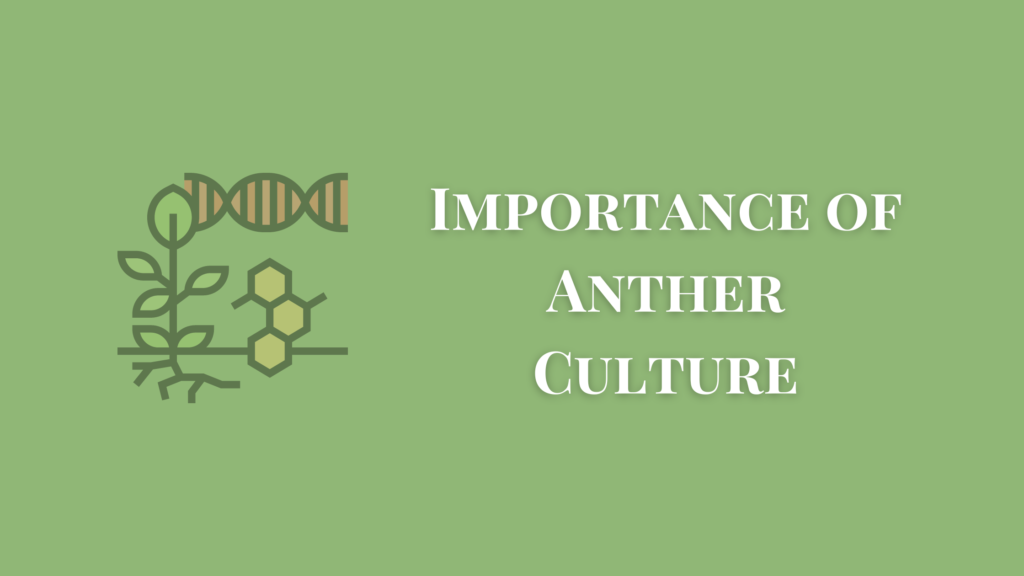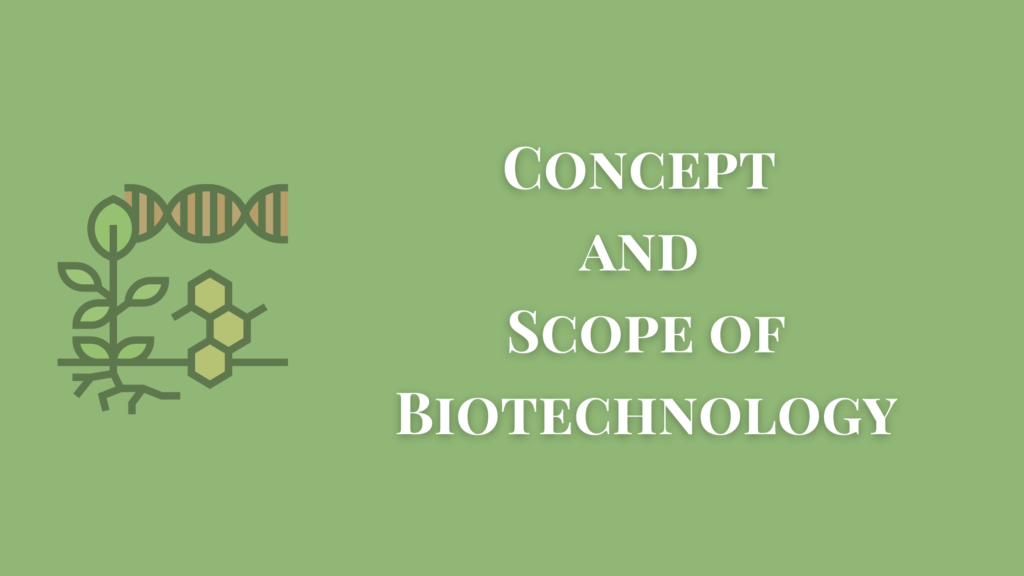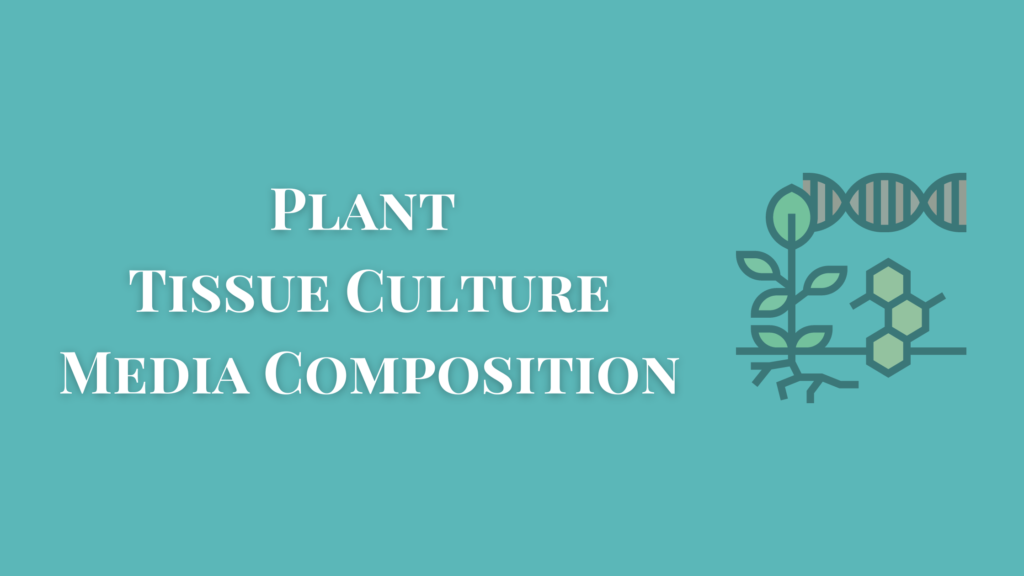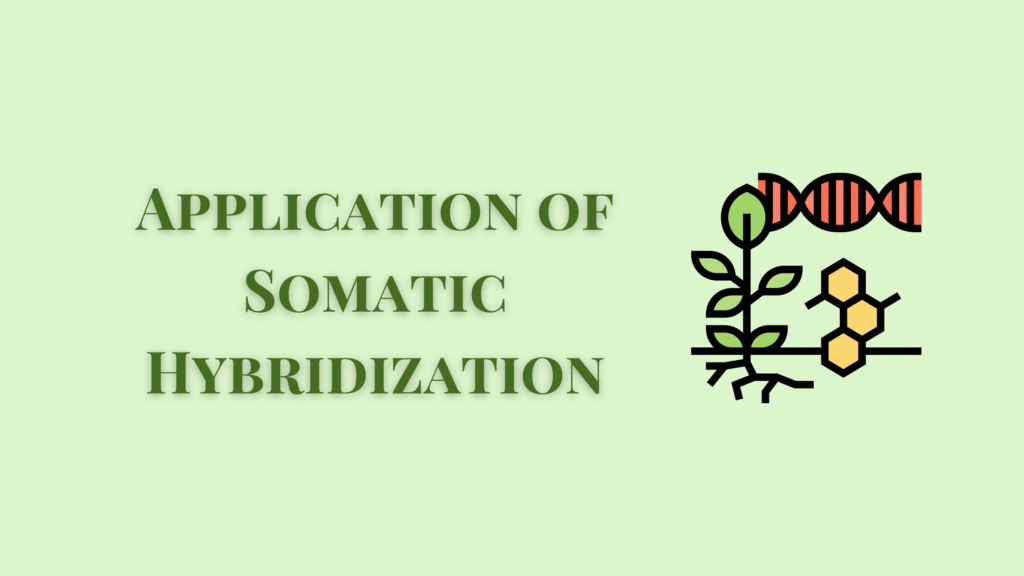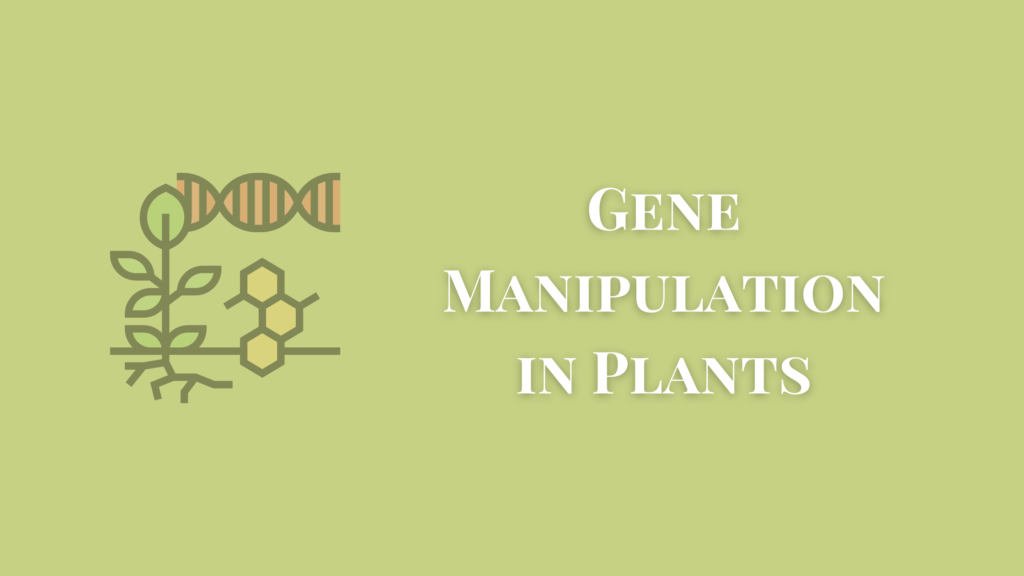Importance of Anther Culture And Production Of Haploids
Anther culture was discovered by Guha and Maheshwari in the 1970s through in-vitro methods. The principle of anther culture is to grow pollen by culturing the anther without disturbing its natural habitat and environment. The anther culture is also known as androgenesis.
Define Anther Culture
Anther culture is a technique by which the developing anther at a precise and critical stage is excised aseptically from unopened flower buds and cultured on a nutrient medium where the microspores within the culture anther develop into callus tissue or embryoid that give rise to haploid plantlets either through organogenesis or embryogenesis.
Factors affecting the anther culture include genotype, developmental stages of microspore, temperature, maturity of the donor plant, panicle pretreatment, culture media, and growth conditions.
Protocol for Anther Culture
The steps of anther culture are,
- Collect the flower buds at the onset of flowering and reject all flower buds that are beginning to open.
- The selected flower buds are then transferred to the laminar airflow.
- Sterilize the flower buds’ surface by 70% alcohol for 10 sec followed immediately by 2% sodium hypochlorite for 10 minutes.
- The buds are then rinsed 3-4 times in distilled water in a sterile air cabinet.
- Using forceps and a dissecting needle the buds are carefully opened and anthers are removed. The filaments are cut from the anthers to avoid callusing from the cut ends.
- These anthers are placed on a suitable culture medium and the cultures are incubated at 25 degrees Celsius in the dark.
- The cultures are later shifted to light after two weeks. Complete plantlets are observed after 4-5 weeks of culture.
- Plantlets emerging out of the anthers are separated using a pair of forceps and remaining anther tissues are discarded.
- For quicker development of plantlets, they may be transferred to a root-inducing medium after they are 15 mm long. During this period the plants are placed on a 12 hr daylight provided with 500 lux illumination from white fluorescent light.
- The plantlets can be transferred to soil after they attain a height of 50 mm.
Production of Haploids
Haploids are sporophytes having gametophytic chromosome number. Haploids could be produced following delayed pollination, irradiation of pollen temperature, colchicine treatment, and distant hybridization.
The most important methods of anther culture are given below.
Chromosome elimination following interspecific hybridization
- In nature, haploids arise as a result of parthenogenesis and these plants rarely produce characters of male parent. The in vitro techniques employed to induce haploid production include,
- Gynogenesis- the production of haploid individuals by the development of an unfertilized egg cell due to delayed pollination.
- Androgenesis- the production of a haploid individual by the development of an egg cell containing the male nucleus. In this case, elimination or inactivation of the egg nucleus occurs before fertilization.
- Genome elimination by distinct hybridization occurs in intergeneric and interspecific crosses due to selective elimination of one of the parental genomes during the development process after fertilization. Consequently, the embryo is formed with only one genome and the plant arising from such embryos is expected to be a haploid.
- Chemical treatment- SOme chemicals such as chloramphenicol and pentafluorophenol, alanine, etc may induce chromosome elimination in somatic cells or tissues, giving rise to haploids. Treatment with toluene blue, malic hydrazine, nitrous oxide, etc may produce such results.
Importance of Anther Culture
Generally, a chromosome contains several dominant and recessive genes whose allelic forms are present on the homologous partner through meiosis. Pollen grains get just one set of homologous chromosomes from the parent.
As a result, the pollen-derived haploid plants express both the recessive and dominant genes since there is no masking of the recessive genes by the dominant genes.
The significance of anther culture is that the haploid plants are sterile and by doubling their chromosomes, fertile diploid plants can be produced. This way both the dominant and recessive genes are doubled at their respective loci.
This way the recessive genes can still be expressed phenotypically, along with the dominant genes. Such diploid plants are called homozygous or isogamic diploid plants. When compared with the heterozygous diploid plants, one can identify the homozygous plants by their recessive characters.
- The importance of anther culture is visible in various fields. It is used in basic research areas, mutation studies, cryogenic studies, plant breeding, and crop improvement.
- Fixation of heterosis is another importance of anther culture as the chromosome count is doubled.
- It brings in genetic variability and helps fix biotic and abiotic stress in plants.
Advantages and Disadvantages of Anther Culture
Advantages of Anther culture
- Anther culture is a simple procedure.
- One of the main advantages of anther culture is that it is quicker and consumes less time to produce a large number of haploids.
- Most of the anthers selected for anther culture are highly responsive to the culturing methods.
- It eliminates the risk of callus formation and chimera from the walls of the anther.
Disadvantages of Anther culture
- Anther culture requires skills to acquire anthers without damaging them.
- The success rate of anther culture is lesser in the case of cereal crops.
- Identification of haploids requires cytological analysis.
- Due to its low success rate, it is not economically viable.
- It is difficult to isolate haploids from a mix with polyploids due to the quicker growth rate of the latter.
- The in vitro phase of anther culture could have deleterious mutations.
Application of Anther Culture for Basic Research
- Haploids developed through anther culture are used for various cytogenetic studies.
- The comparison of the heterozygous diploid with the homozygous diploid developed through anther culture helps in the study of recessive characters.
- The genetic analysis of haploids helps with the study of genetic recombination of many high plants.
- The mode of cell differentiation, cell division series, development of a plant from a single cell through various stages, etc is subjected to studies.
- Anther culture makes way for the selection of desirable gene combinations through the doubling of the haploid genome thereby developing fertile plants.
- Haploids are also used for studying various factors that control embryogenesis.
- Haploids help understand the phylogenetic relationship between different species and shed light on the measuring of chromosome duplication of a species.
- Anther culture gives better information about chromosome homology and its interpretation.
- Genetic analysis of haploids will reveal various inheritance patterns.
- Anther culture may be used to produce nullisomics, monosomies, trisomies, tetrasomics, and aneuploids.
Application of Anther Culture in Mutation Study
Anther culture helps in the study of somatic cell genetics. Since the majority of mutations are recessive, they cannot be expressed in diploid cells. Haploid callus cells have been used to study the effect of various mutagens.
Several mutant cell lines have been successfully isolated to work on and to get resistant varieties that can withstand environmental stress, herbicides, salt, drought, various drugs, viruses, etc have been developed.
Application of Anther Culture in Cytogenetic Studies
- Cryopreservation of haploid cells helps in the long-term preservation of genetic stability and to establish a germplasm bank.
- Pollen embryos, haploid meristems, etc are genetically stable and can easily develop into an entire plant.
Application of Anther Culture in Plant Breeding and Crop Improvement:
- Diploid homozygous plants can be produced within a year. It is beneficial for those plants that are self-incompatible.
- In the breeding programs, the homologous plants can be used for desirable mutations, transformation and biochemical mutations.
- Anther culture develops not just haploid plants but plants of different ploidies as well.
- By producing a large number of microspores, it can be used to develop a huge range of beneficial combinations.
- Production of diploid homozygous plants makes way for pure lines of various genotypes within a short time.
- Haploids produced through anther culture can be used for protoplast culture and somatic hybridization.
- In genetic engineering, haploids are used for gene transfer.
Application of Haploid Culture for Horticultural Plants
In horticulture, anther culture is used to develop important plants in a short period for commercial purposes. Those plants that usually take years to propagate are used for anther culture. The development of Freesia is an example.
Anther Culture and Alkaloid Content
The homozygous plants produced through anther culture are used for choosing breeding lines of several plants. One such example is Nicotiana tobaccum. Here, the plants with high alkaloid content, developed through anther culture, are selected for breeding.
Similarly, Hyoscyamus niger plants of homozygous recombinants having high alkaloid content are propagated through anther culture.
